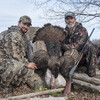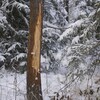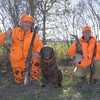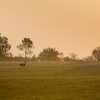
Trapping License 101

In this day and age, trapping has a different if not nobler purpose than the fur trade, but the methods and skills are largely the same. It’s true there isn’t a lot of money to be made in trapping these days, but it’s still vital to the management and success of our wildlife populations.
When I made the decision to become a licensed trapper, I noticed a distinct barrier between the information and its availability without having to jump to a million different sources. It can be hard to find the necessary resources on trapping licenses and what you’re really getting yourself into. It can be even harder getting in touch with veteran trappers.

I had a lot of questions, whether detailed or simple, and it took a lot of effort to find answers from one source. Admittedly, trappers are not the greatest advocates for online resources, but with the newest demographic joining, that’s all changing.
If you’ve been looking into getting your trapping license, here’s a one-stop resource article to help you decide what you’re after, what you need to get started, and more.
What You Need to Consider
There’s a lot to consider before you take your trapper's course, but it really doesn’t have to be complicated. In the next few paragraphs, I’m going to touch on some major questions I had while considering my own trapping license.
- How Will This Benefit You?
- What Trapping License Suits You?
- Where to Take Your Trapping Course and How Long Do They Take?
- What Gear Do You Need?
Benefits of Trapping
With lower auction prices on pelts, it does make a person wonder whether it’s worth becoming a trapper. If you were to talk to any trapper, however, you’d quickly realize it’s not just about the pelts. Far from it.
First and foremost, you may enjoy being a trapper if you enjoy the outdoors, and an abundant supply of fresh air. Secondly, you’ll appreciate the exercise and the way your trapline––big or small–– can keep your health and fitness in order throughout the off-season.

If you enjoy learning, trapping is so much more than setting traps and hoping for the best. You’ll be able to put to use all of your outdoor skills and knowledge all while learning as you go.
Besides, you will never learn more about the outdoors and your surroundings than you will in the presence of a trapper. And everyone should aspire to be that knowledgeable of a person.
This benefit may seem obvious, but you can’t forget about your beautiful pelts as a benefit as well. Fur clothing and accessories are about the warmest, most durable tools of the trade you can get. What’s even better is you’ll be utilizing them on your very own trapline.

On top of the personal benefits of becoming a trapper, there are other areas to consider, such as how much your conservation efforts are going to help manage wildlife populations, as well as reduce conflicts both between humans and wildlife and between different types of wildlife. Not to mention that the amount of data that trappers alone collect in a single season gives the MNRF critical information on populations.
Conservation is certainly a buzzword in today’s day and age but rarely is more than the bare minimum ever done. As an ethical trapper, hunter, or angler, you can take steps towards being more conscious of your environment and the threats to it.
What Trapping License Do You Want?
First of all, to qualify for an adult trapping license you need to first; hold a valid hunting/fishing Outdoors Card (Class H1), be a resident of Ontario, be 16 or older, and of course, attend a trapping course at your chosen organization.
Once you meet those requirements, you can apply for one of the licenses below. For a more detailed look at these licenses, head to ontario.ca.
Landowner License: Trapping only your own property
Resident License: You trap private lands with written permission from a landowner. Or you can trap Crown land that is not part of a Registered Trapline identified in the license.
Helper License: For Registered Trapline Areas, only if you trap within the areas on the Head Trapper’s license and for fur-bearing animals that count towards the Head Trapper’s quota.
Head Trapper: For Registered Trapline Areas, you are solely responsible for quotas assigned, and for your helper trapper, if you choose to bring one on––that they follow the laws and regulations.
Youth License: Ages 12-15. Permitted to participate in almost all stages of trapping including prepping pelts and setting traps, but only under the direct supervision of a licensed trapper who must be at least 18 years of age.
If you are a youth, your requirements for the trapping course are to be 12-15 years of age, have written consent from your parent or guardian, and be a resident of Ontario or a Canadian citizen.
Where To Take Your Trapping Course
After you’ve made your decision about which license sounds right for you, you can sign up for a Trapping course with the Ontario Fur Managers Federation, the Anishinabek Nation, Nishnawbe Aski Nation, or Grand Council Treaty #3. At the end of this article, there is a list of instructors who work with the Ontario Fur Managers Federation with their contact info and the areas they service.
Once the course is completed, you can apply for a trapping license through your chosen course organization.
The course itself is 40 hours long and it is usually spread out over two weekends, instead of through the week to make it easier for people to attend. Costs are set by course coordinators, but from my understanding, the average cost is $350.00. I’ve also learned that course coordinators put a lot more than just their time into these courses, and the prices reflect it fairly.

There are 32 hours of classroom education and eight hours of hands-on pelt preparation and trap setting. So you can walk into this course completely green and learn a lot more than you might give yourself credit for.
The course covers other valuable skills such as survival skills, maintaining harvesting levels, ideal pelt preparation, and safety with humanely setting traps.
Gear Needed
Trapping is not an inexpensive lifestyle or even a hobby. Startup costs will be intimidating for some. Perhaps that’s the reason more people don’t trap in this day and age.
But there are suppliers who offer beginner kits that include just about everything you could hope for, for smaller fur-bearing animals such as beaver, martin, and minx.

Depending on your trapline or the size of private land, you’ll need to consider transportation and storage when in movement. Most trappers rely on snowmobiles, but some travel solely on foot.
Absolute musts for trapping:
- Stretching boards
- Traps, Trap Setters, and Snares
- Suggested Knives (other trappers will have an opinion on this, don’t worry)
- A place to work, preferably outside of your main home or garage
- Mode of Transportation
- Hunting License (Necessary to take the course)
- Firearms license and legal weapon for dispatching animals humanely when necessary
Recommended Articles

Cat Island Lodge
A First-Time Bear Hunter Visits Watson's Kaby Lodge

Moose Tales
Deer Hunting with Border Country Outfitters

Combining Great Fishing and Hunting

Dual Trips to Maiden Bay Camp

Ontario's Big Black Bears

Chasing Gobblers

Fly-in Moose Hunt

Bruce County Turkey

Turkey Tales and Turkey Fails

A Hunter's Dream for Grouse

Big & Small

Fast & Furious Duck Hunting

Turkey for Lillian
Ontario Waterfowl Hunt
Spring Bear Hunt at Olive the Lake

Remote Shoreline Moose Hunting
An unforgettable adventure into the heart of Northern Ontario

















